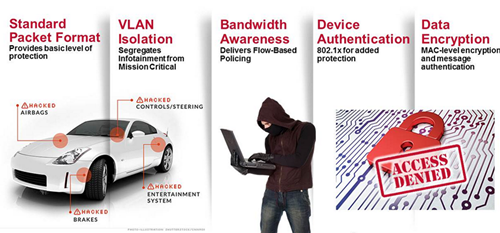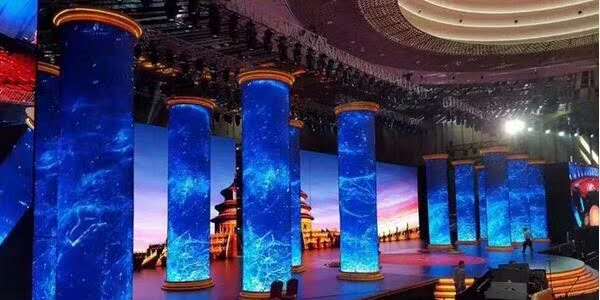Today's advanced in-vehicle technology is driving the most exciting revolutionary leap in the history of the car since the founding of Ford Motor Company in 1903: no need for human intervention in car driving, and crashes no longer exist. While technology is being accused of distracting drivers and creating new culprits for danger, it is also expected to create a new era of road safety. This kind of in-vehicle technology can be used for driving without daydreaming, not snoring, not reaching for coffee, and not texting while driving on the highway.
This article refers to the address: http://
From driver assistance to driverless cars
Reducing human error is the driving force behind the introduction of intelligent driver assistance systems in the automotive industry. The system features intelligent parking, lane keeping, obstacle warning and automatic acceleration or braking. It is no exaggeration to say that everything needed to achieve a driverless car has entered the car. The industry's current focus is on software optimization, which is designed to navigate through the input data of multiple sensors on busy city streets. These sensors can detect hundreds of objects at once, including the “parking†sign in the hands of intersection traffic controllers. .
"driving skills
Requirements for driverless cars: First, provide sensors and camera images with 360-degree field of view, as well as intelligent software that can analyze sensor/camera input data and take action. The data is then received and distributed throughout the system, and software commands are sent to the central computer of the automotive electronic control unit and actuator. Digital maps and satellite navigation systems play a very important role in the orientation and driving from point A to point B. Driverless cars that travel on the road not only need to communicate with each other, but must also communicate with infrastructure such as traffic lights and toll booths.
Lay the foundation
The industry is already embarking on the development of a vehicle-to-vehicle (V2V) communication system that will enable wireless dynamic exchange of data between the user's car and other vehicles. Anonymous exchange of "I am here" data, 360 degrees can be used to sense other vehicles based on orientation, speed and location, which will revolutionize the way we operate our roads. Drivers will use this data stream to sense and identify threats and hazards that are about to be encountered, and to take preventive measures to avoid collisions.
In the past few years, the US Department of Transportation has been piloting the V2X technology exchange with the University of Michigan's Transportation Research Institute in Ann Arbor. Experts believe that as long as V2X is properly deployed, it will greatly reduce the number of car accidents and save lives. When in use, V2X will also add various data such as traffic signal time limits, upcoming corners or obstacles, road conditions, number of highway lanes, and other important warnings.
Let's take a closer look at the behind-the-scenes support technologies:
• Camera and sensor
The roof sensor and 360-degree camera will use lasers to measure the distance of various objects within 650 feet, thus playing a vital role in the realization of driverless cars, which can not only achieve 3D maps, but also Bring the ability to "see" danger. The other camera and remote and short-range radar sensors are mounted in the windshield to monitor the vehicle in front of and behind the car in real time. The rear antenna receives geographic location data from GPS satellites, while the ultrasonic sensor helps to handle work in tight spaces.
Each sensor technology has its own advantages and disadvantages. Although they all work well in the dark, Lidar remote sensing technology uses a laser to illuminate the target, then analyzes the returned light to measure the distance, providing a focused view in a particular direction, and it can also use radar to achieve greater Coverage. In addition, Lidar technology is superior to the camera in measuring speed and distance, but it is inferior in identifying objects. Ultrasonic sensors that do not function at higher speeds can play a vital role in close range.
• Wi-Fi
Wi-Fi plays a disruptive role in the interior of the car, and analysts expect that applications with Wi-Fi capabilities will increase eightfold by 2019. Cars can be directly upgraded with software and new features. Drivers can not only use smart mobile devices to remotely check their car's position, fuel level and mileage, but also use it to receive alerts about car performance and diagnostics. In addition, Wi-Fi technology enables seamless content transfer from mobile devices to automotive infotainment systems and rear-seat displays.
Using the latest wireless 802.11ac standard, drivers and passengers can easily transfer and synchronize content from mobile devices to car infotainment systems and rear-seat displays.
In-vehicle Wi-Fi technology is becoming increasingly popular. Just this year, General Motors announced the inclusion of Wi-Fi connectivity as standard in its entire product line, which is achieved through its proven On-Star technology. Wi-Fi will play an important role in V2X communication and the realization of driverless vehicles, especially as standards continue to evolve to support gigabit and higher transmission rates.
• GPS/GNSS
Most people are familiar with digital maps and GNSS satellite navigation, which is what people often call GPS. GPS will also play an important role in V2X communication. Combined with Wi-Fi, these technologies will enable vehicle-to-vehicle (V2V) and vehicle-to-person (V2P) communications.
By anonymously exchanging data, including location data, each vehicle will share information about its position, speed, and location. Both V2V and V2X rely on a Wi-Fi technology called dedicated short-range communication. Wi-Fi Direct's peer-to-peer standard will also support V2P communication, allowing pedestrians and cyclists to use the smartphone app to alert the vehicle to its presence and location.
• Near field communication
Near Field Communication (NFC) is a set of standards for establishing a wireless connection between smart devices through brief contact or extreme proximity. NFC pairing, also known as "tap-to-connect" technology, not only simplifies the setup of mobile device connections within the vehicle, but also provides a range of comfortable and convenient applications including keyless entry and vehicle settings.
By using NFC technology, drivers can pair mobile devices simply by having the mobile device tap the dashboard, eliminating the need to operate the menus separately on two separate screens. The integration of NFC in the windshield allows NFC-enabled digital keys to exchange data such as identity authentication information, user profiles, and vehicle information, which is especially useful in streamlining the vehicle rental process. In addition, the use of NFC-enabled digital keys can be extended beyond automotive applications to accomplish tasks such as mobile payments and access to gated buildings or parking lots.
• Ethernet
The protection of connected cars will be increasingly concerned by the industry, especially in the field of driverless cars. This is where car Ethernet comes in. It turns the entire vehicle into a centralized, secure network. Like its role in enterprise networks and data centers for decades, Ethernet technology delivers proven performance, compliance, and network security standards with the inherent features that protect cars from potential hackers.
As the backbone of the car's network, wired Ethernet connections provide standard packet format, VLAN isolation, bandwidth awareness, device/message authentication, and data encryption to help protect against network attacks, eavesdropping, and deviceless licenses.

With the development of science and technology, people's constant pursuit of vision, the display effect requirements are higher and higher, especially in the use of specific occasions, such as the wall is arc, to do cylindrical or wave shape, etc., Flexible LED Display can meet and achieve the effect of the best choice.

Flexible Led Screen Product features: PCB is made of soft PCB material, which can be bent back and forth at will, seamlessly spliced between modules, with smooth appearance, no block feeling, good flatness, hard LED module can not meet the requirements, installed with magnet, which can be maintained back and forth, simple maintenance, synchronous and asynchronous broadcast are supported.
Application scenarios: the screen can be as thick as 12mm, the module size is small, and the application scenarios are wide, such as curved surface display cabinet, shopping mall cylinder, bar, hospital, stadium, etc., which can also be made into curved mirror screens to facilitate movement and handling.

Structure and product principle: the module adopts line link and 5V low-voltage power supply to support vehicle power supply. It can be played synchronously or asynchronously. Can also be made in the factory according to customer requirements, the corresponding box structure, splicing customer requirements of the shape. Save the trouble of customers doing structure. The application of LED soft module is generally based on the requirements of modeling, showing the flexible beauty. In order to meet the viewing requirements of customers from different angles, the company adopts the latest packaging technology, 360 ° without dead angle, color without distortion, gorgeous, and high reduction degree. The LED soft module circuit board of our company adopts vertical design. In the bending process, the line is kept on, the signal is not dropped, and the light is not dropped.

Note: because the screen is a soft module, it is spliced according to the structure, so in the process of making the structure, the precision of the structure is very high. The structure adopts iron material, which is convenient for magnet adsorption.

Flexible Led Display,Movable Led Display,Flexible Led Screen Wall,Flexible Led Screen
Shenzhen Vision Display Technology Co,.LTD , https://www.ledvdi.com